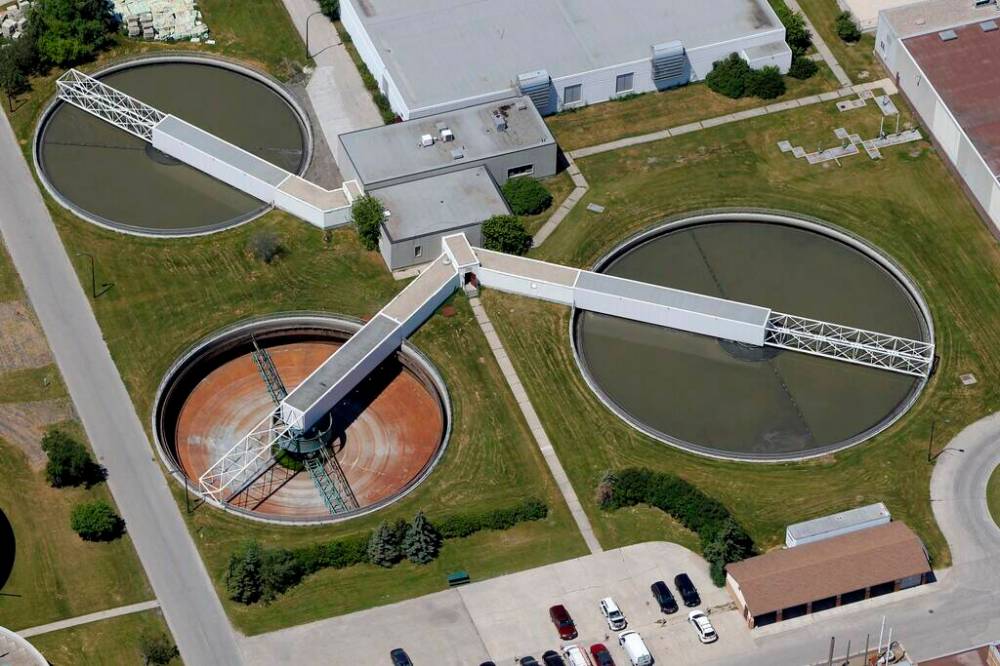Lack of growth buys city time on sewage project
Advertisement
Read this article for free:
or
Already have an account? Log in here »
To continue reading, please subscribe:
Monthly Digital Subscription
$0 for the first 4 weeks*
- Enjoy unlimited reading on winnipegfreepress.com
- Read the E-Edition, our digital replica newspaper
- Access News Break, our award-winning app
- Play interactive puzzles
*No charge for 4 weeks then price increases to the regular rate of $19.00 plus GST every four weeks. Offer available to new and qualified returning subscribers only. Cancel any time.
Monthly Digital Subscription
$4.75/week*
- Enjoy unlimited reading on winnipegfreepress.com
- Read the E-Edition, our digital replica newspaper
- Access News Break, our award-winning app
- Play interactive puzzles
*Billed as $19 plus GST every four weeks. Cancel any time.
To continue reading, please subscribe:
Add Free Press access to your Brandon Sun subscription for only an additional
$1 for the first 4 weeks*
*Your next subscription payment will increase by $1.00 and you will be charged $16.99 plus GST for four weeks. After four weeks, your payment will increase to $23.99 plus GST every four weeks.
Read unlimited articles for free today:
or
Already have an account? Log in here »
Hey there, time traveller!
This article was published 07/06/2022 (1285 days ago), so information in it may no longer be current.
The pandemic has bought the city more time on a key sewage project.
Since late 2020, the city has warned it could run out of capacity to process sewage sludge into what’s known as biosolids — a crucial step in its sewage treatment process — within the next five to nine years.
To avoid that, the second phase of a $1.854-billion north end sewage treatment plant upgrade must be completed before capacity is exceeded.

Two years later, the city expects it still has the same capacity remaining, largely because Winnipeg’s population growth plummeted during the pandemic.
“With COVID, there was less immigration… we didn’t have the same population growth that we typically do,” Cynthia Wiebe, water and waste’s manager of engineering services, told the Free Press.
Winnipeg’s population grew by 9,853 in 2019, though growth fell to just 4,783 in 2020. The number of residents decreased by 354 in 2021, Statistics Canada figures show.
The biosolids-treatment upgrade is expected to take about seven years to build, once a funding agreement with the feds and province is approved, said Coun. Brian Mayes, chairman of council’s water and waste committee.
That means running out of capacity still poses a major concern, since it could force the city to reject some new developments within just a few years, said Mayes.
“It’s still a big issue and we’ve got to get going on this given how long it takes to build the… thing,” said Mayes. “At some point, COVID will end and demand will increase.”
Meanwhile, the water and waste committee voted to set a city goal to complete an up-to $2.3-billion master plan to reduce combined sewer overflows by the end of 2045, pending council approval. That would match a deadline the province has set for the project.
“We should, for our children and for the environment, try to get this done by the provincial deadline,” said Mayes.
The city has warned it might not finish the work until 2095, if it’s forced to fund it without the help of senior governments.
Combined sewer overflows dumped 10.6-billion litres of diluted sewage into local waterways last year.
The committee also directed the public service to study a process that would allow grey water systems in single-family homes and multi-family residences. Typically, such systems reuse water that has passed through sinks and showers to flush toilets and/or water lawns.
While some councillors support the idea as a new way to conserve water, city staff say it won’t reduce the demand on city sewage treatment and could be expensive to implement. Allowing such systems would require inspections and other permit processes that could require more staff, said Tim Shanks, the city’s water and waste director.
“This is an aspect of conservation that requires more on the city’s part than we are set up to do right now. We’d have to change a bylaw, add a permitting process, regular inspections… If the intent of the motion is that grey water is an answer to our sewer problems, it’s not,” said Shanks. “It helps with water-scarcity issues and it’s a private plumbing feature.”
He said the city has made massive strides in water consumption and residents now use less water than they did in the 1980s, despite population growth, so the local conservation benefit would be much lower than in many other cities.
Mayes said he thinks the idea is worth studying, especially since some developers have proposed it as a way to ensure infill projects can get built in areas where sewage capacity otherwise wouldn’t support them.
If council concurs, a report on grey water systems would be expected within about six months.
Joyanne.pursaga@freepress.mb.ca
Twitter: @joyanne_pursaga

Joyanne is city hall reporter for the Winnipeg Free Press. A reporter since 2004, she began covering politics exclusively in 2012, writing on city hall and the Manitoba Legislature for the Winnipeg Sun before joining the Free Press in early 2020. Read more about Joyanne.
Every piece of reporting Joyanne produces is reviewed by an editing team before it is posted online or published in print — part of the Free Press‘s tradition, since 1872, of producing reliable independent journalism. Read more about Free Press’s history and mandate, and learn how our newsroom operates.
Our newsroom depends on a growing audience of readers to power our journalism. If you are not a paid reader, please consider becoming a subscriber.
Our newsroom depends on its audience of readers to power our journalism. Thank you for your support.


